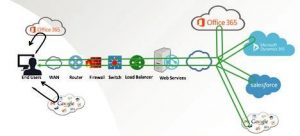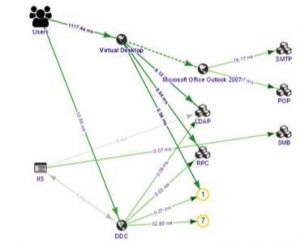
Cleaning up our Digital Dirt


Now, what exactly is digital dirt, in the context of enterprises? It is highly complex and ambiguous to precisely identify digital dirt, let alone address the related issues. Chandra Mouleswaran S, Head of Infra Services at ZIF Technologies says that not all the applications that run in an organization are actually required to run. The applications that exist, but not used by internal or external users or internal or external applications contribute to digital dirt. Such dormant applications get accumulated over time due to the uncertainty of their usage and lack of clarity in sunsetting them. They stay in the organization forever and waste resources, time and effort. Such hidden applications burden the system, hence they need to be discovered and removed to improve operational efficiency.
Are we prepared to clean the trash? The process of eliminating digital dirt can be cumbersome. We cannot fix what we do not find. So, the first step is to find them using a specialized application for discovery. Chandra further elaborated on the expectations from the ‘Discovery’ application. It should be able to detect all applications, the relationships of those applications with the rest of the environment and the users using those applications. It should give complete visibility into applications and infrastructure components to analyze the dependencies.
Shadow IT, the use of technology outside the IT purview is becoming a tacitly approved aspect of most modern enterprises. As many as 71% of employees across organizations are using unsanctioned apps on devices of every shape and size, making it very difficult for IT departments to keep track. The evolution of shadow IT is a result of technology becoming simpler and the cloud offering easy connectivity to applications and storage. Because of this, people have begun to cherry-pick those things that would help them get things done easily.
Shadow IT may not start or evolve with bad intentions. But, when employees take things into their own hands, it is a huge security and compliance risk, if the sprawling shadow IT is not reined in. Gartner estimates that by next year (2020), one-third of successful attacks experienced by enterprises will be on their shadow IT resources.
IT organizations should deploy a tool that gives complete visibility of the landscape, discovers all applications – be it single tenant or multi-tenant, single or multiple instance, native or virtually delivered, on-premise or on cloud and map the dependencies between them. That apart, the tool should also indicate the activities on those applications by showing the users who access them and the response times in real-time. The dependency map along with user transactions captured over time will paint a very clear picture for IT Managers and might bring to light some applications and their dependencies, that they probably never knew existed!
Discover, is a component of ZIF’s AIOps Platform. Discover can work as a stand-alone component and also cohesively with the rest of the AIOps Platform. Discover provides Application Auto Discovery and Dependency Mapping (ADDM). It automatically discovers and maps the applications and topology of the end to end deployment, hop by hop. Some of its key features are:
The auto-discovery features require no additional configuration upon installation.
It uniquely and automatically discovers all Windows and Linux application in your environment, identifies it by name, and measures the end-to-end and hop-by-hop response time and throughput of each application. This works for applications installed on physical servers, in virtualized guest operating systems, applications automatically provisioned in private or hybrid clouds, and those running in public clouds. It also works irrespective of whether the application was custom developed or purchased.
It auto-discovers multitenant applications hosted on web servers and does not limit the discovery to the logical server level.
It auto-discovers multiple instances of the same application and presents them all as a group with the ability to drill down to the details of each instance of the application.
It auto-discovers any requests directed to SaaS applications such as Office 365 or Salesforce and calculates response time and throughput to these applications from the enterprise.

It automatically maps the topology of the delivered applications and VDIs, hop-by-hop and end-to-end. It provides extensive support for Citrix delivered applications or desktops. This visibility extends beyond the Citrix farm into the back-end infrastructure on which the delivered applications and VDIs are supported.
The architecture auto-discovers application flow mapping topology and user response times to create the application topology and update it in near real-time — all without user configuration. This significantly reduces the resources required to configure service models and operate the product.
It auto-discovers the different tiers of every multi-tiered application and displays the performance of each tier. Each tier is discovered and named with the transactional throughput and response times shown for each tier.
It identifies each user of every application and the response time that the user experiences for each use of a given application.
The module uses a sophisticated anomaly detection algorithm to automatically assess when a response time excursion is valid, then if a response exceeds normal baseline or SLA performance expectations, deep diagnostics are triggered to analyze the event. In addition, the hop-by-hop segment latency is compared against the historical norms to identify deterministically which segment has extended latency and reduced application performance.

For more detailed information on ZIF’s Discover, or to request a demo please visit

“Chandra heads the IMS practice at ZIF. He has around 25+ years of rich experience in IT Infrastructure Management, enterprise applications design & development and incubation of new products / services in various industries. He has also created a patent for a mistake proofing application called ‘Advanced Command Interface”. He thinks ahead and his implementation of ‘disk based backup using SAN replication’ in one of his previous organizations as early as in 2005 is a proof of his visionary skills.“
Please complete the form details and a customer success representative will reach out to you shortly to schedule the demo. Thanks for your interest in ZIF!